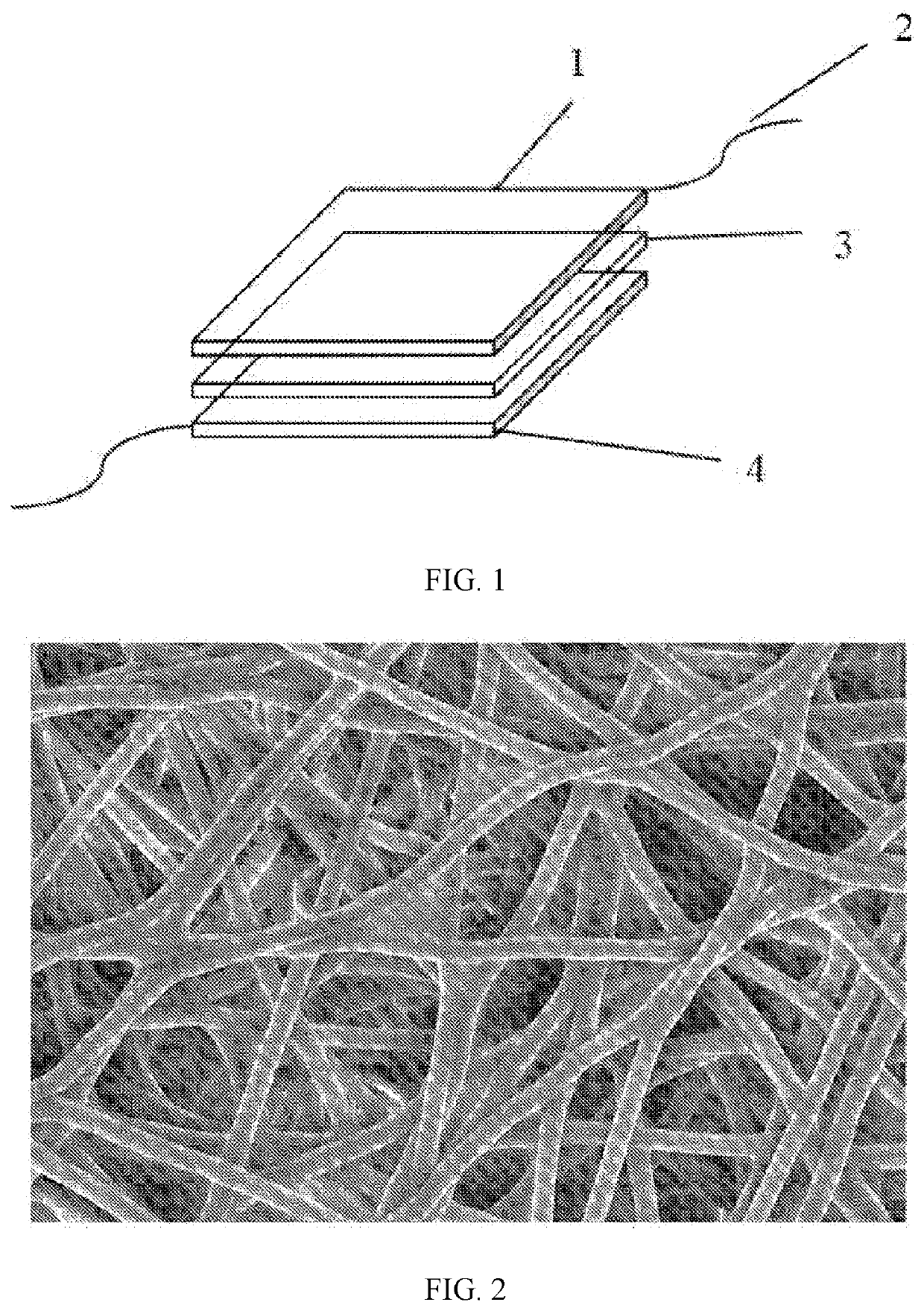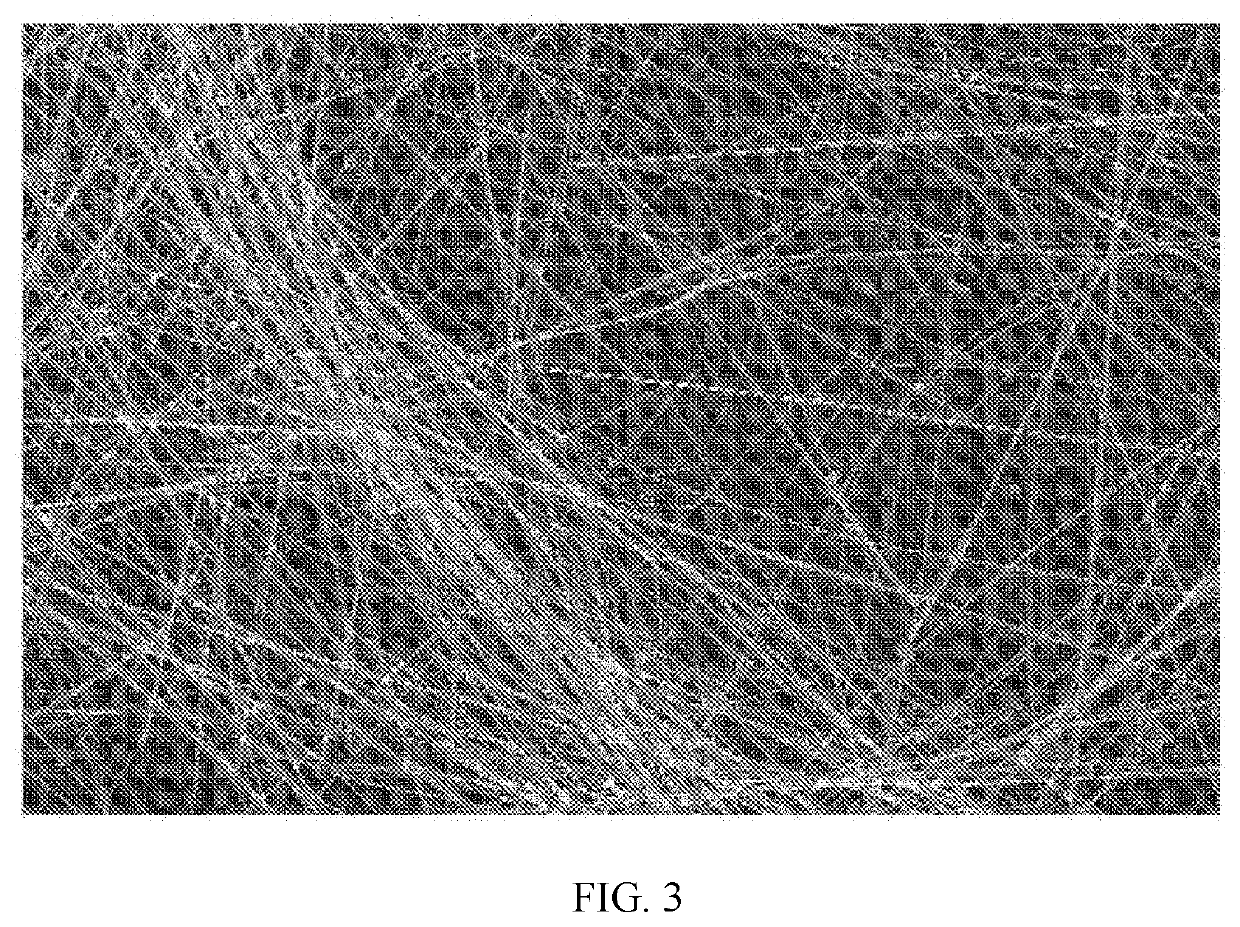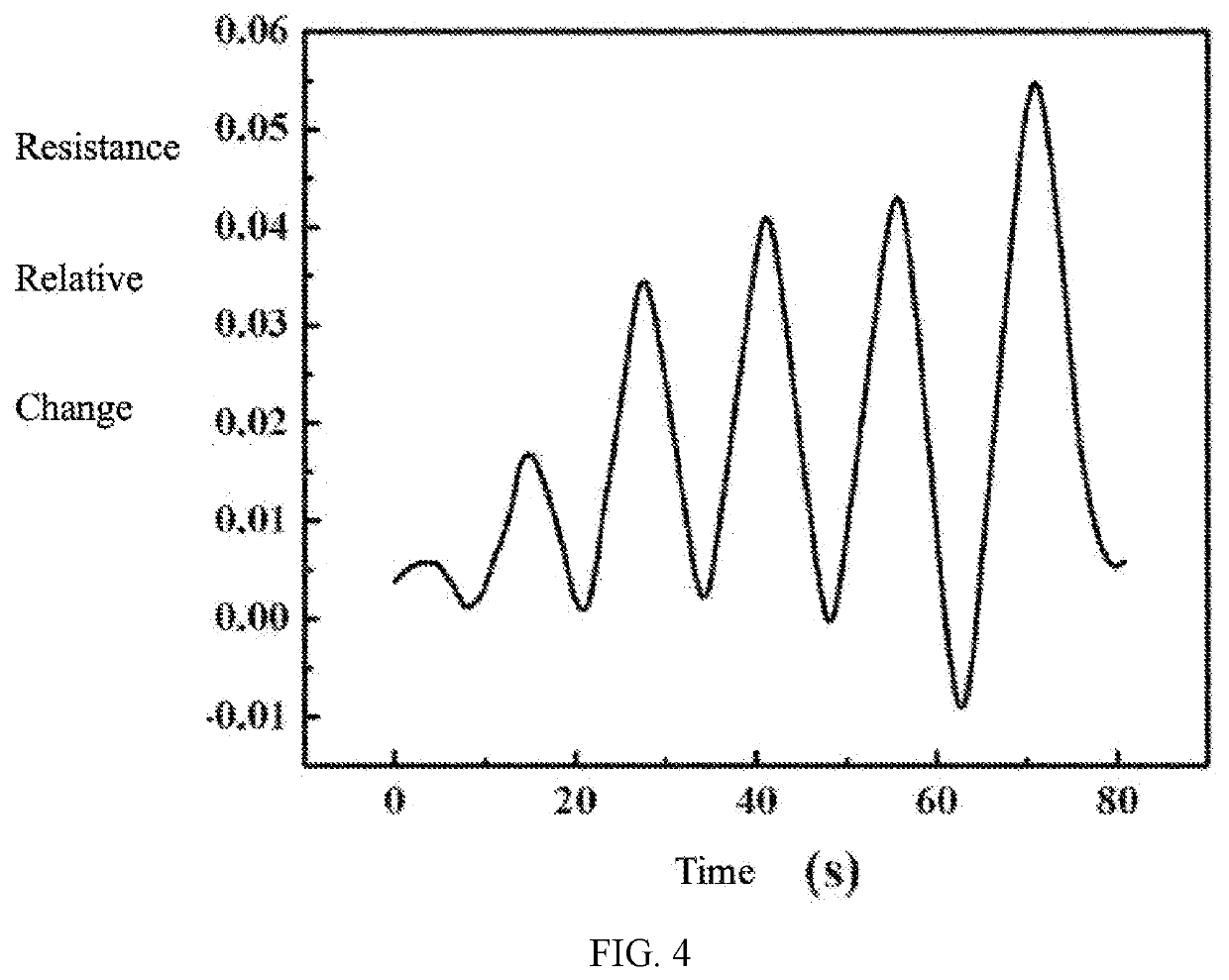Preparation method for a flexible stress sensor based on a composite multilayer conductive material
- Summary
- Abstract
- Description
- Claims
- Application Information
AI Technical Summary
Benefits of technology
Problems solved by technology
Method used
Image
Examples
embodiments 1
[0046]A preparation method for a flexible stress sensor based on a composite multilayer conductive material, comprises the following steps:
[0047]S1). preparing a PEDOT: PSS cotton cloth fiber layer
[0048]S101). adding 3 g poly-3,4-ethoxylene dioxy thiophene monomer: polystyrene sulfonate PEDOT:PSS to the 0.45 g dimethyl sulfoxide DMSO solution for modification; heating and stirring in an oil bath at 50° C. for 1 h and dropwise adding 5 mL absolute ethyl alcohol for 2 h with the temperate 50° C. to obtain a modified PEDOT:PSS conductive solution.
[0049]S102). soaking the cotton cloth fiber sheet with the size of 1×5 cm into the modified PEDOT:PSS conductive solution in step S101), and stirring at room temperature for 4 h, and then dried at 80° C. for 2 h.
[0050]S103). repeating the step S102) for 3 times, until the modified PEDOT:PSS conductive solution evenly penetrated and firmly attached to the cotton cloth fiber plate, to obtain PEDOT: PSS conductive cotton cloth;
[0051]S104). laying...
embodiments 2
[0064]A preparation method for a flexible stress sensor based on a composite multilayer conductive material, comprises the following steps:
[0065]S1). preparing a PEDOT: PSS cotton cloth fiber layer
[0066]S101). adding 2.5 g poly-3,4-ethoxylene dioxy thiophene monomer: polystyrene sulfonate PEDOT:PSS to the 0.35 g dimethyl sulfoxide DMSO solution for modification; heating and stirring in an oil bath at 50° C. for 1 h and dropwise adding 5 mL absolute ethyl alcohol for 2 h with the temperate 50° C. to obtain a modified PEDOT:PSS conductive solution.
[0067]S102). soaking the cotton cloth fiber sheet with the size of 1×5 cm into the modified PEDOT:PSS conductive solution in step S101), and stirring at room temperature for 4 h, and then dried at 80° C. for 2 h.
[0068]S103). repeating the step S102) for 3 times, until the modified PEDOT:PSS conductive solution evenly penetrated and firmly attached to the cotton cloth fiber plate, to obtain PEDOT: PSS conductive cotton cloth;
[0069]S104). layi...
embodiments 3
[0082]A preparation method for a flexible stress sensor based on a composite multilayer conductive material, comprises the following steps:
[0083]S1). preparing a PEDOT: PSS cotton cloth fiber layer
[0084]S101). adding 3.5 g poly-3,4-ethoxylene dioxy thiophene monomer: polystyrene sulfonate PEDOT:PSS to the 0.35 g dimethyl sulfoxide DMSO solution for modification; heating and stirring in an oil bath at 50° C. for 1 h and dropwise adding 5 mL absolute ethyl alcohol for 2 h with the temperate 50° C. to obtain a modified PEDOT:PSS conductive solution.
[0085]S102). soaking the cotton cloth fiber sheet with the size of 1×5 cm into the modified PEDOT:PSS conductive solution in step S101), and stirring at room temperature for 4 h, and then dried at 80° C. for 2 h.
[0086]S103). repeating the step S102) for 3 times, until the modified PEDOT:PSS conductive solution evenly penetrated and firmly attached to the cotton cloth fiber plate, to obtain PEDOT: PSS conductive cotton cloth;
[0087]S104). layi...
PUM
| Property | Measurement | Unit |
|---|---|---|
| temperature | aaaaa | aaaaa |
| humidity | aaaaa | aaaaa |
| constant temperature | aaaaa | aaaaa |
Abstract
Description
Claims
Application Information
 Login to View More
Login to View More - R&D
- Intellectual Property
- Life Sciences
- Materials
- Tech Scout
- Unparalleled Data Quality
- Higher Quality Content
- 60% Fewer Hallucinations
Browse by: Latest US Patents, China's latest patents, Technical Efficacy Thesaurus, Application Domain, Technology Topic, Popular Technical Reports.
© 2025 PatSnap. All rights reserved.Legal|Privacy policy|Modern Slavery Act Transparency Statement|Sitemap|About US| Contact US: help@patsnap.com



